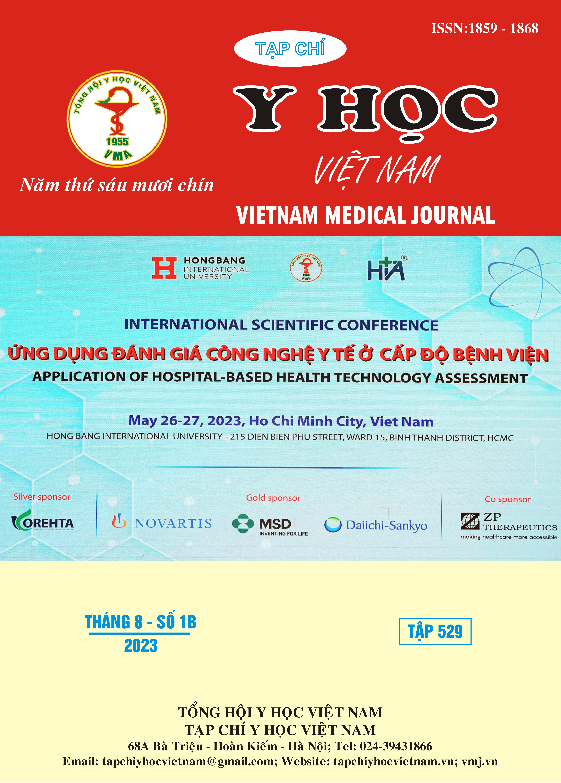IMAGING CHARACTERISTIC AND RESULT OF ENDOVASCULAR INTERVENTION TREATMENT FOR POSTERIOR CIRCULATION ANEURYSM IN BACH MAI HOSPITAL
Main Article Content
Abstract
Objectives: To evaluate the evaluates the results and experience in endovascular intervention of for treatment posterior circulation cerebral aneurysms at the Department of Diagnostic Imaging at Bach Mai Hospital. Material and methods: A retrospective and prospective study was conducted on 95 patients with posterior circulatory aortic aneurysms and indicated treatment with 95 posterior circulation aneurysms at Bach Mai Hospital from 1/2014 to 7/2022. Results: The rate of ruptured aorta in the study group was 73 aneurysms (accounting for 76.8%) and 22 aneurysms unruptured (accounting for 23.2%). Headache is a common symptom in 100% of patients. The ruptured aneurysms all had the rate of subarachnoid bleeding according to Fisher at levels III and IV, accounting for 15.1% and 83.5%, respectively. 100% of unruptured coronary artery can be actively intervened; The group of ruptured aorta had an average treatment time of 11.72±9.66. Clinical recovery according to the mRS scale achieved the highest rate in the group of unruptured aorta. Good recovery (mRS≤2) in the ruptured aneurysm group was 75.2%, 95.6% in the unbroken group. The aneurysm completely occluded after intervention was high (from 78.3% of the coil group with balloon block to 100% of the gill embolism group). The flow at the neck of the pocket was 9.5% in the group of direct vasculitis, 21.7% in the group with balloon blocker. The rate of incomplete occlusion after the intervention was low (in the coil group 9.5%). Conclusion: Endovascular intervention is an effective method in the treatment of posterior circulation aneurysms.
Article Details
Keywords
endovascular treatment for posterior circulation aneurysm, endovascular intervention
References
2. Gruber A Richling B, Bavinzski G, et al (1995), "GDC-system embolization for brain aneurysms - location and follow-up", Acta Neurochir (Wien), 134(3-4), p. 177-83.
3. Pierot. L; Wakhloo A. K. (2013), "Endovascular treatment of intracranial aneurysms: current status", Stroke, 44(7), p. 2046-54.
4. Wakhloo Ajay K Pierot Laurent (2013), "Endovascular treatment of intracranial aneurysms current status", Stroke, 44(7), p. 2046-2054.
5. Moyle Henry Mascitelli Justin R, Oermann Eric K et al (2014), "An update to the Raymond–Roy Occlusion Classification of intracranial aneurysms treated with coil embolization", Journal of neurointerventional surgery, tr. neurintsurg-2014-011258.
6. Guglielmi.G; Vinuela. F; Duckwiler.G et al (1992), "Endovascular treatment of posterior circulation aneurysms by electrothrombosis using electrically detachable coils", J Neurosurg, 77(4), p. 515-24.
7. Trần Anh Tuấn (2015), Nghiên cứu điều trị phình động mạch não cổ rộng bằng phương pháp can thiệp nội mạch, Luận án tiến sỹ Y học, Đại học Y Hà Nội.
8. Vũ Đăng Lưu (2012), Nghiên cứu chẩn đoán và điều trị phình động mạch não vỡ bằng can thiệp nội mạch, Luận án Tiến sỹ Y học, Đại học Y Hà Nội.


